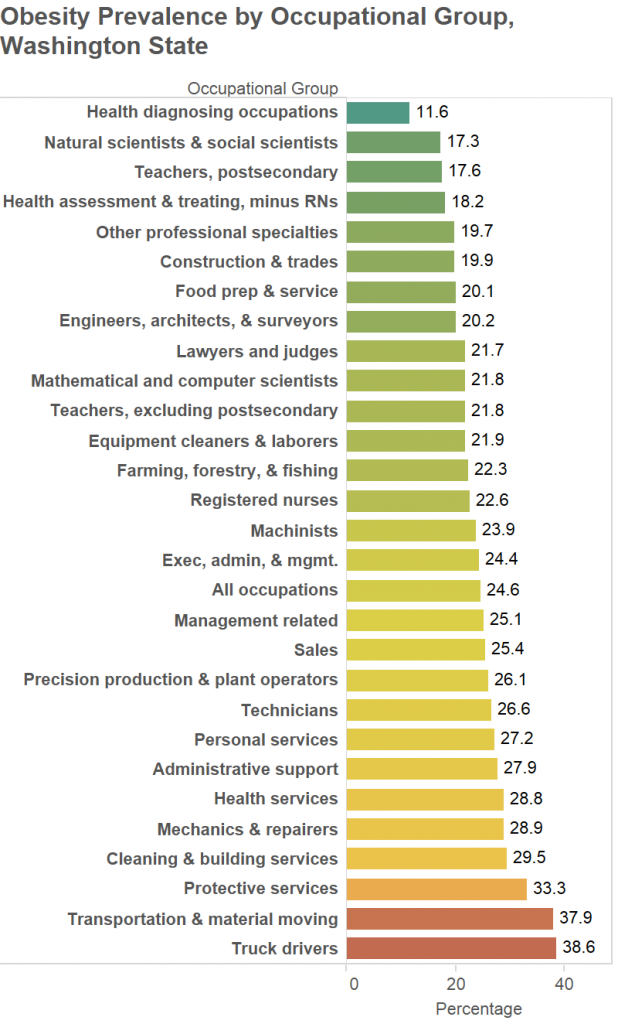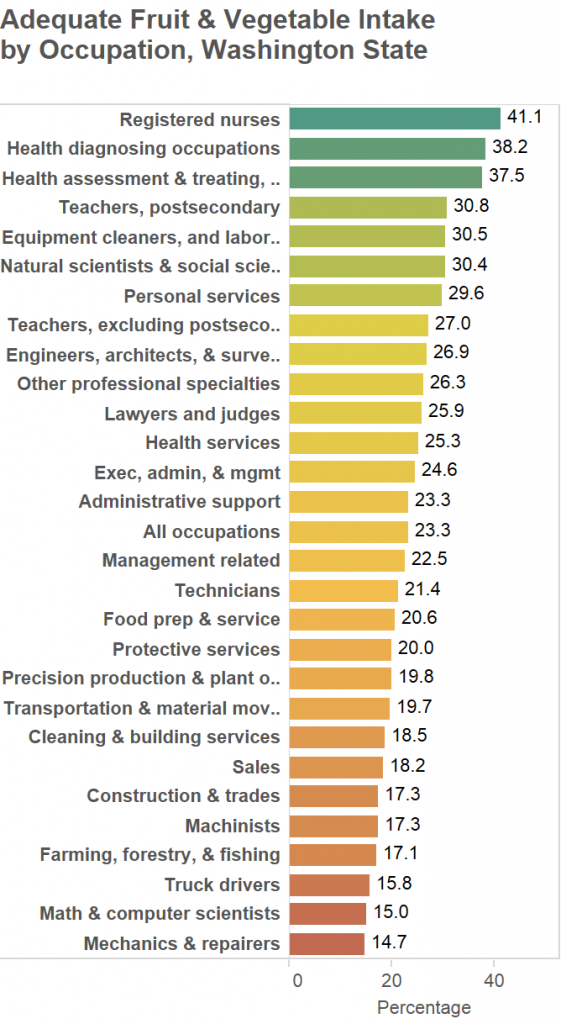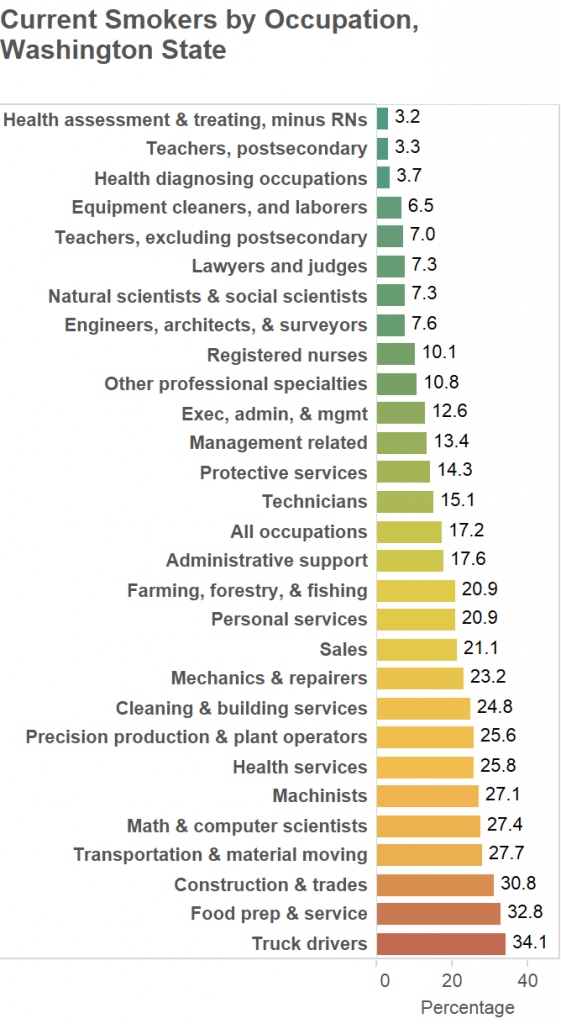by Hans D. Stroo on April 13, 2015
In Washington State, the prevalence of obesity roughly doubled over the last twenty years. Obesity is expensive. It leads to bad health outcomes that can be highly dangerous for the afflicted and expensive for employers.
The prevalence of obesity varies substantially by occupation. In the workplace, obesity is associated with heavy spending on chronic care, increased risk of developing cancer, musculoskeletal disorders, cardiovascular disease, and stress. As the workforce ages, these chronic diseases and their associated costs will place a huge burden on the health care system.
The CDC’s Behavioral Risk Factor Surveillance System (BRFSS) is an annual, state-based, random-digit-dialed, landline telephone survey of the adult population that collects data on health conditions and behaviors. The data being visualized below come from the CDC’s Washington State study, published January 2014. Their survey, which interviewed 88,121 residents, was conducted for the benefit of “employers, policy makers, and health promotion practitioners” so that they can “target and prioritize workplace obesity prevention and health behavior promotion programs.”
Workers in health diagnosing occupations had consistently higher proportions of positive health behaviors than workers in any other occupations.
Prevalence of Obesity (%) by Occupational Group
Overall obesity prevalence was 24.6%. Workers in protective services were 2.46 times as likely to be obese as workers in health diagnosing occupations. According to the CDC, “estimating the prevalence of obesity by occupation can inform the development and evaluation of the effectiveness of work-based wellness programs.”
Obesity was by far the lowest within health diagnosing occupations. Scientists, teachers, and health assessment/treatment occupations also tended towards low prevalence of obesity. Truck drivers, material moving & transportation workers, and protective service occupations had the highest prevalence of obesity. Some high-obesity occupations such as truck drivers and material movers do not experience employment in a single fixed worksite and are likely influenced by the availability of food choices in the broader environment, such as fast food and convenience stores.
Obesity was significantly higher among workers who were older, male, and less educated. Compared with workers in the highest income group (>$75,000), those in the lowest income group (<$35,000) had significantly higher obesity prevalence.

Adequate Fruit & Vegetable Intake ($) by Occupation
Combined with leisure time physical activity, respondents with adequate fruit & vegetable intake had significantly less incidents of obesity.

Current Smokers
Nonsmokers were more likely to be obese than current smokers. This is likely attributable to the appetite-suppressing effects of smoking. The proportion of current smokers was highest for truck drivers (34.1%) and lowest for teachers and health assessment & treating occupations, excluding registered nurses (~3.25%).

Vigorous Physical Activity
Regular physical activity is critical to maintaining a healthy weight. The CDC study tracked the relationship between 1) obesity, 2) physically-demanding job activity, and 3) leisure-time physical activity (LTPA).
The highest proportion of vigorous LTPA was among workers in protective services (50.8%), followed by health diagnosing occupations (45.3%) and postsecondary teachers (42.7%). Machine operators, assemblers, and inspectors had the lowest proportion (27.2%). More than 80% of workers in cleaning and building services, construction and construction trades, and farming, forestry, and fishing reported their work as physically demanding, but 3% or less of lawyers and judges and teachers, excluding postsecondary, did so.
